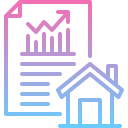Start Here: Navigating the Interactive Map
Use your mouse or trackpad to zoom and pan smoothly across regions. Click any county or neighborhood boundary to open a detailed panel with income, rent, and ownership indicators tailored to that place.
Start Here: Navigating the Interactive Map
Toggle filters for renters or owners, select household size, and adjust the time slider to see how affordability changes through economic cycles. Test scenarios, compare seasons, and bookmark the views that matter.







